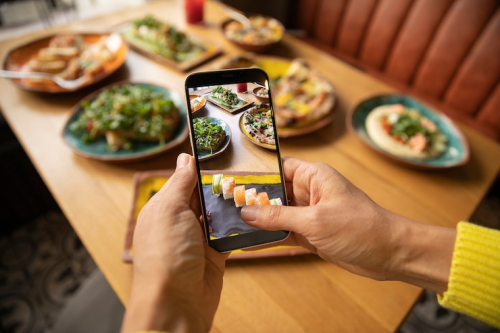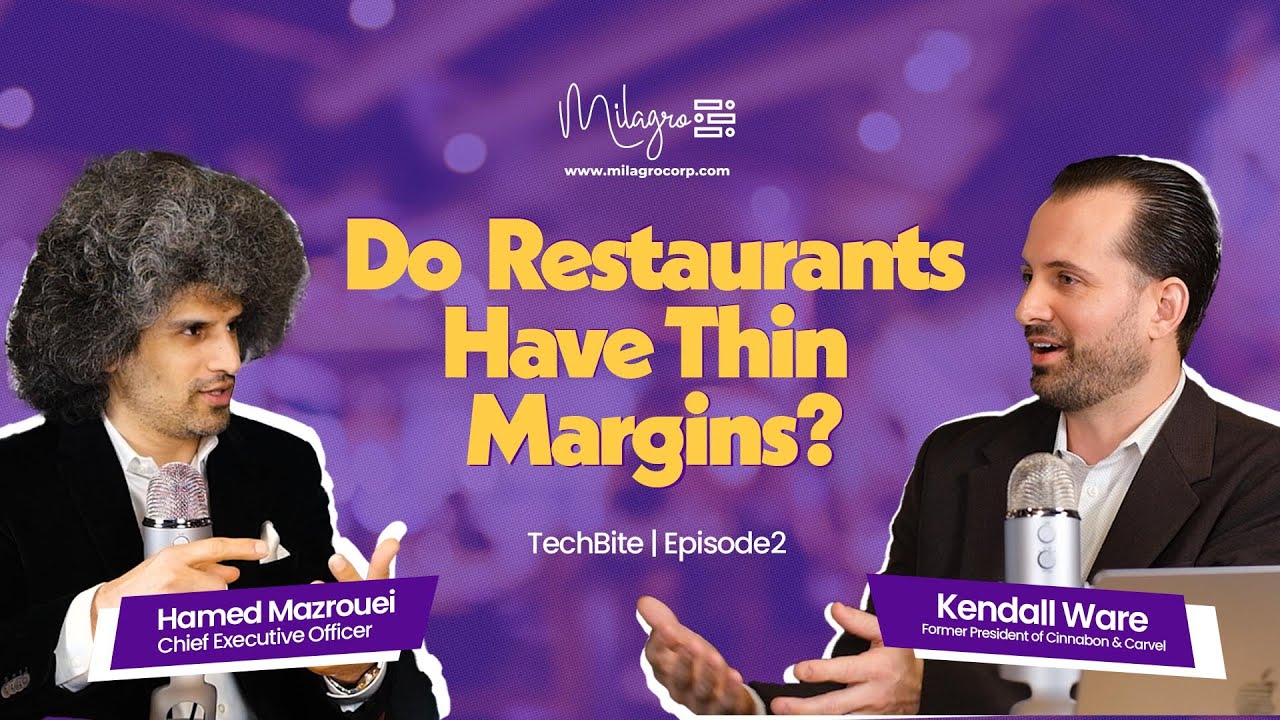Quick Listen:
In the restaurants, where a single disruption can halt operations and frustrate customers, maintaining seamless service is critical. From sudden power outages to unreliable internet connections, the challenges are relentless. Yet, cloud-based POS systems are transforming how restaurants operate, ensuring continuity even in the face of chaos. These innovative solutions empower eateries whether quick-service chains or fine-dining establishments to process orders, manage inventory, and deliver exceptional customer experiences, no matter the circumstances.
The global cloud POS market, valued at $4.70 billion in 2023, is set to grow at a compound annual growth rate (CAGR) of 18.2% through 2030. This explosive growth underscores a pivotal shift: restaurants are abandoning outdated, on-premise systems for flexible, web-based platforms that offer reliability, scalability, and real-time insights. But what makes cloud-based POS systems indispensable for service continuity? And why are restaurant operators investing heavily in this technology to future-proof their businesses?
The Surge of Cloud POS: Meeting Modern Demands
Today’s restaurants face unprecedented complexity. The rise of digital ordering, contactless payments, and off-premise dining has reshaped customer expectations. According to Straits Research, the cloud POS market, valued at $6.19 billion in 2024, is projected to soar to $45.20 billion by 2033, achieving a remarkable CAGR of 24.7%. The driving force? Customers demand speed, convenience, and personalized experiences, which legacy systems bulky terminals reliant on local servers struggle to deliver.
Unlike traditional setups, cloud-based POS systems store transaction data on remote servers, accessible from any internet-connected device. This eliminates the need for expensive, specialized hardware, replacing it with versatile tablets or smartphones running advanced software. As noted by IMARC Group, the market’s expansion from $5.11 billion in 2024 to an estimated $25.21 billion by 2033, at a CAGR of 18.43%, is propelled by the growing adoption of digital payments and the need for real-time analytics. For restaurants, this translates to synchronized menus, pricing, and inventory across multiple locations, ensuring consistency whether a customer orders in Seattle or Sydney.
The urgency for cloud adoption stems from the high cost of downtime. A network failure during a peak dinner rush can lead to lost revenue, overwhelmed staff, and a tarnished reputation. Cloud POS systems mitigate this risk with offline mode capabilities, allowing restaurants to process transactions during internet outages and sync data once connectivity is restored. This resilience explains why North America, with its advanced technological infrastructure, dominates the global market, according to IMARC Group.
Real-World Impact: Cloud POS in Action
Imagine a busy quick-service restaurant during a thunderstorm. The power fails, the internet cuts out, but orders keep pouring in. With a cloud-based POS system, staff seamlessly switch to offline mode, processing payments on tablets that store transactions locally until the network recovers. This scenario is a reality for operators leveraging cloud technology. For example, some restaurant chains use a centralized cloud dashboard to update menus and pricing across multiple locations in real time, ensuring new promotional items launch uniformly across the country.
Mobile POS tablets have also revolutionized service flexibility, particularly for outdoor dining and curbside pickup. During the pandemic, restaurants rapidly adapted to al fresco setups and delivery models, with cloud-based systems enabling payments on the go. As reported by Allied Market Research, the cloud POS market, valued at $2.24 billion in 2020, is expected to reach $13.24 billion by 2028, growing at a CAGR of 24.5%, driven by the demand for such adaptability.
In high-pressure settings, cloud POS systems excel. Some fine-dining restaurants integrate their cloud POS with third-party delivery platforms, streamlining orders from external apps into the kitchen workflow without manual intervention. This integration reduces errors, speeds up service, and enhances customer satisfaction. As businesses embrace digital transformation, cloud-based POS systems are becoming the foundation for hybrid service models that seamlessly blend in-person, online, and off-premise dining.
Challenges and Considerations
Despite their transformative potential, cloud-based POS systems are not without challenges. Data security is a paramount concern, as restaurants handle sensitive customer information, including credit card details and loyalty program data. A single breach can have catastrophic consequences. However, as Verified Market Research points out, cloud POS providers often manage compliance with privacy regulations, a vital feature for the hospitality sector. Operators must diligently evaluate vendors to ensure robust encryption and adherence to industry standards.
Connectivity remains a hurdle, particularly in areas with unreliable internet. While offline mode provides a buffer, prolonged network failures can disrupt operations, especially in rural settings. Staff training also presents obstacles, as transitioning to a cloud-based system requires employees to master new workflows. Resistance to change can delay implementation. Additionally, vendor lock-in poses a risk, with restaurants potentially facing high costs to switch providers after committing to a specific ecosystem.
Yet, the market’s outlook remains robust. Verified Market Research forecasts the cloud POS market to grow from $3.73 billion in 2024 to $15.03 billion by 2032, with a CAGR of 21% from 2026 to 2032, driven by cost-effectiveness and scalability. For small and medium-sized restaurants, the lower upfront costs of cloud solutions level the playing field, enabling them to compete with larger chains.
Strategic Advantages: Beyond Uptime
Cloud-based POS systems offer more than just operational continuity they redefine how restaurants strategize and grow. Automatic software updates eliminate the burden of manual maintenance, allowing staff to prioritize customer service. Real-time reporting empowers managers to make informed decisions, from adjusting menu offerings based on sales trends to optimizing inventory to minimize waste. As Grand View Research notes, the integration of artificial intelligence and machine learning into POS systems enables deeper insights into customer behavior, helping restaurants tailor promotions and streamline operations.
Scalability is a key advantage. A cloud POS system can effortlessly scale with a business, whether it’s a single bistro opening a second location or a chain expanding nationwide. Centralized management ensures consistency, while omnichannel integration unifying in-store, online, and mobile orders delivers a cohesive customer experience. With the rise of contactless payments and digital wallets, these systems are equipped to handle transactions across all channels, a trend fueling the market’s rapid growth.
The Future of Restaurant Resilience
As restaurants navigate an increasingly digital landscape, cloud-based POS systems have become indispensable. Industry experts emphasize that operational resilience is the hallmark of successful businesses. The ability to remain operational under any circumstance is what distinguishes thriving restaurants from those that falter. For operators, this means selecting a POS provider with robust offline capabilities, flexible API integrations, and reliable support.
The data is compelling. The cloud POS market is projected to reach $25.6 billion by 2033, with a CAGR of 19%, according to Market.us. Restaurants have a clear opportunity to stay competitive by evaluating their current systems, assessing risks, and investing in technology that ensures uninterrupted service. In an industry where every moment matters, cloud-based POS systems are not just a tool they are the lifeline keeping restaurants agile, adaptable, and prepared for the future.
Disclaimer: The above helpful resources content contains personal opinions and experiences. The information provided is for general knowledge and does not constitute professional advice.
You may also be interested in: 7 Best Restaurant POS Systems 2024
Scattered systems and manual processes erode your restaurant’s margins daily. Milagro unifies POS, digital menus, online ordering, staffing, loyalty, and AI-powered marketing into one platform, slashing costs and enhancing guest loyalty. Reclaim control over operations and drive revenue growth. Streamline your workflow and elevate profitability. Schedule your Milagro demo today!
Powered by flareAI.






